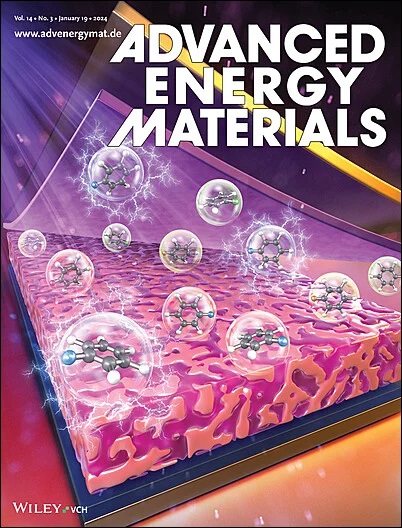通过贝叶斯主动学习促进固体氧化物燃料电池的发展
IF 24.4
1区 材料科学
Q1 CHEMISTRY, PHYSICAL
引用次数: 0
摘要
为了确保固体氧化物燃料电池(sofc)的可持续运行,需要了解组件的使用寿命。多相场模拟研究在理解sofc潜在的微观结构变化和随着时间的推移而产生的性质变化方面发挥着重要作用。这种模拟的主要挑战在于确定合适的模型并定义其参数化。本研究提出了一个结合贝叶斯优化的主动学习框架,以确定最优模型参数来模拟镍钆掺杂铈(Ni - GDC)阳极的老化。利用实验微观结构数据和人工智能框架的功能,克服文献数据的不完整性和不一致性,在复杂的高维参数空间中进行导航。成功的参数搜索使得Ni - GDC阳极在SOFC长期运行期间的老化和性能的模拟研究成为可能。这种方法提高了相场模拟的准确性,并为SOFC开发中更广泛的应用提供了一种通用工具,可以预测各种操作条件下的材料行为。本文章由计算机程序翻译,如有差异,请以英文原文为准。
Enhancing Solid Oxide Fuel Cells Development through Bayesian Active Learning
Ensuring the sustainable operation of solid‐oxide fuel cells (SOFCs) requires an understanding of the components' lifespan. Multiphase‐field simulation studies play a major role in understanding the underlying microstructural changes and the resulting property alterations in SOFCs over time. The primary challenge in such simulations lies in identifying a suitable model and defining its parametrization. This study presents an Active Learning framework combined with Bayesian Optimization to identify optimal model parameters to simulate the aging of nickel‐gadolinium doped ceria (Ni‐GDC) anodes. The study overcomes incompleteness and inconsistency of literature data, and navigates the complex, high‐dimensional parameter space, by leveraging experimental microstructure data and the power of the AL framework. The successful parameter search enables simulation studies of Ni‐GDC anode aging and performance during long‐term SOFC operation. This approach improves the accuracy of phase‐field simulations and offers a versatile tool for broader applications in SOFC development, predicting material behavior under various operational conditions.
求助全文
通过发布文献求助,成功后即可免费获取论文全文。
去求助
来源期刊

Advanced Energy Materials
CHEMISTRY, PHYSICAL-ENERGY & FUELS
CiteScore
41.90
自引率
4.00%
发文量
889
审稿时长
1.4 months
期刊介绍:
Established in 2011, Advanced Energy Materials is an international, interdisciplinary, English-language journal that focuses on materials used in energy harvesting, conversion, and storage. It is regarded as a top-quality journal alongside Advanced Materials, Advanced Functional Materials, and Small.
With a 2022 Impact Factor of 27.8, Advanced Energy Materials is considered a prime source for the best energy-related research. The journal covers a wide range of topics in energy-related research, including organic and inorganic photovoltaics, batteries and supercapacitors, fuel cells, hydrogen generation and storage, thermoelectrics, water splitting and photocatalysis, solar fuels and thermosolar power, magnetocalorics, and piezoelectronics.
The readership of Advanced Energy Materials includes materials scientists, chemists, physicists, and engineers in both academia and industry. The journal is indexed in various databases and collections, such as Advanced Technologies & Aerospace Database, FIZ Karlsruhe, INSPEC (IET), Science Citation Index Expanded, Technology Collection, and Web of Science, among others.
 求助内容:
求助内容: 应助结果提醒方式:
应助结果提醒方式:


